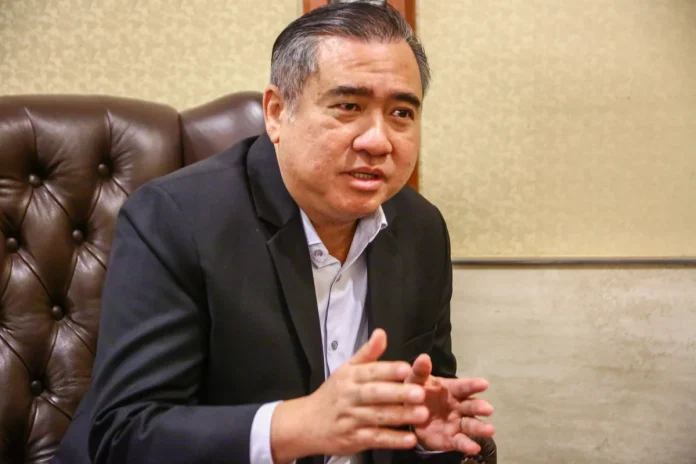Malaysia is set for a transformative year in transport, with the RTS Link and ECRL Phase 1 reaching major milestones in 2026.
PETALING JAYA: Next year could mark a turning point for Malaysia’s transport system. Two mega projects – the Rapid Transit System (RTS) Link and East Coast Rail Link (ECRL) Phase 1 are on track for completion, promising to improve connectivity, boost economic integration and challenge the nation’s dependence on private vehicles.
In a wide-ranging exclusive interview with theSun, Transport Minister Anthony Loke detailed plans for new rail lines, multi-modal public transport, safety reforms and integrated enforcement systems.
While acknowledging persistent congestion, low public transport uptake and commercial vehicle safety concerns, Loke said reforms now underway, including the Kejara demerit system revamp and a central commercial driver database, will deliver tangible results by late 2025 and into 2026, making the coming year a pivotal test of Malaysia’s transport planning and public acceptance.
theSun: When will the RTS Link be completed and what impact will it have?
Loke: Well, next year, of course, there’ll be a completion of a few major projects. By the end of 2026, we anticipate that the RTS will be completed. That is one of the major ones we’re seeing completion by the end of December.
The RTS is, of course, one of our most important projects and a key catalyst for southern Malaysia’s development. It will be a real game changer for Johor Bahru and integrate Johor Bahru with Singapore, as part of the Johor-Singapore Special Economic Zone (JS-SEZ). So, as far as RTS is concerned, that will be the major one. I think its completion will be a major accomplishment, because everyone in Johor, especially Johor Bahru and even in Singapore, are looking forward to that project.
theSun: What is the timeline for the ECRL Phase 1 and what comes after?
Loke: By the end of next year, we are also looking at the completion of ECRL Phase 1, from Gombak to Kota Bharu. The timeline is that it will be operational from early 2027.
Of course, there will be another phase from Gombak to Port Klang, which will take another year.
theSun: What other transport projects will Malaysians see next year?
Loke: So these two major projects will see completion by the end of next year. I think that will be the highlight of next year and our focus. Of course, other ongoing projects are equally important. The ETS to Johor Bahru will begin at the end of this year, so next year it will be in full force.
We also anticipate that LRT 3 will be operational next year. In addition, we are continuing work on other projects such as the Penang LRT and the bus transformation initiative. So, as far as public transportation is concerned, there are many ongoing projects, and we hope that every year, there will be a milestone that we can achieve.
Tackling congestion and shaping public transport behaviour
theSun: With LRT 3 coming online, how realistically can congestion be reduced?
Loke: Well, I have to be realistic. The share of public transport is still relatively low, just about 20% of the overall. Even with LRT 3, of course, we hope that it can reduce congestion substantially, especially in the corridor from Shah Alam to Klang, particularly along the Federal Highway.
But it is a challenge – how do we convince people to leave their car behind and use public transport? That requires a cultural change. It’s not just about convenience; Malaysians are still used to driving. From your house to your end destination, you do not have to change modes of transport.
Public transport needs multiple modes. You cannot depend solely on point-to-point transit. No matter how we build our LRT network, point-to-point coverage is impossible. Therefore, multiple modes and better first-and-last-mile connectivity are essential. That’s why we give leeway to the e-hailing industry to experiment with concepts like carpooling, which reduces costs for first-and-last-mile transport.
Critics often suggest a congestion charge but we haven’t triggered that option yet as it could increase transportation costs. For now, we hope to continue incentivising and encouraging people to use public transport.
theSun: Malaysians frequently complain about heavy vehicles. What more can be done beyond current enforcement?
Loke: This is an ongoing effort. It’s not something you do once and forget. We aim to instil a culture of safety.
The public is generally supportive – for example, during recent crackdowns on overloading, despite pushback from industry groups, public opinion was largely positive.
One initiative is the mandatory installation of Speed Limitation Device (SLD). Over 50,000 vehicles have already been installed or verified for SLD. This is ongoing, and we will continue enforcement to ensure compliance.
theSun: Given recent accidents, does Malaysia need a central driver database like Puspakom but for drivers?
Loke: Yes, we are doing that. We have already announced that we are building a central database system for commercial vehicle drivers. This will ensure that their records are properly captured, and those who hire them will be able to check their backgrounds.
theSun: The BRT (Bus Rapid Transit) in Subang Jaya is smooth and popular. Will Malaysia expand BRT systems elsewhere?
Loke: Well, the BRT is a Public-Private Partnership (PPP) project but I’m not rejecting the idea. Of course, any public transportation projects which are viable will definitely be considered.
Expansion of BRT, even though at this point of time there’s no specific proposal in the pipeline, we will not rule out this expansion in the future. But at this point of time, I think as far as Klang Valley is concerned, we do not have any specific proposal yet.
So, right now, we are still talking about how do we integrate all the major public transport projects in Klang Valley. The next big thing for Klang Valley will be the Circle Line, MRT 3.
This project is still in the pipeline, but the government has not awarded the contract yet. So, it will still take many years to realise the MRT project. So, I think the current challenge is still how to fully utilise the current resources and current infrastructure that we have.







